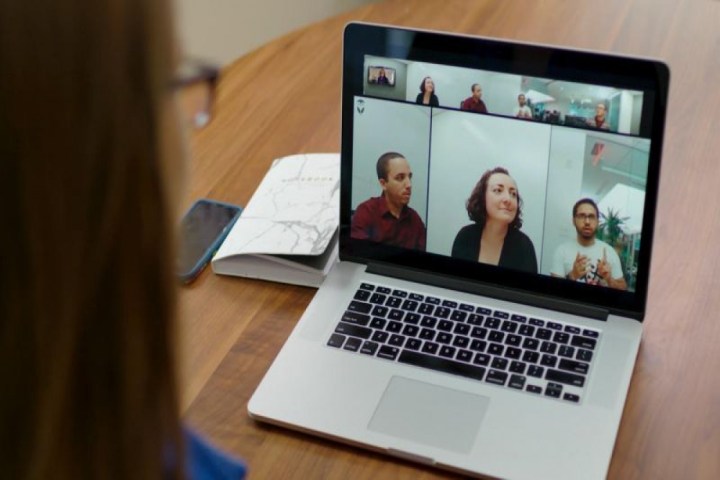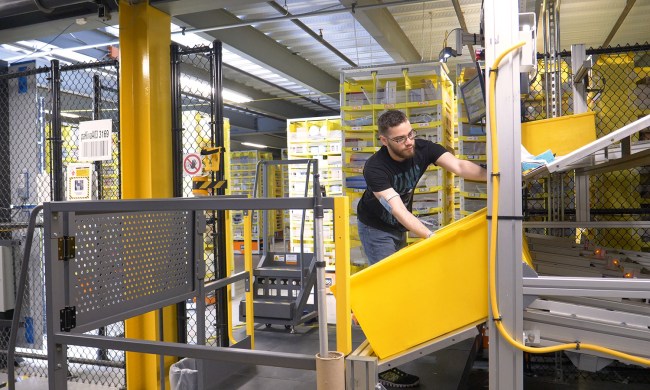
Seattle-area tech companies like Amazon and Facebook have told employees to work remotely during the COVID-19 outbreak (if possible), but some people were already working from home anyway. But with Seattle Public Schools closed through late April, many of these workers have kids with time on their hands at home — while they work.
“That’s the biggest challenge right now, is they’re just bored out of their minds,” Deven Wilson, a program manager at Verizon, told Digital Trends.

He’s had his middle-school-age son, Thomas, out of school for a week, because his juvenile arthritis medication has immunosuppression side effects. “We were really worried he was going to get behind,” said Wilson. Now that all the schools are closed — and not holding online classes — that’s less of a concern. But Wilson knows he’s lucky that he hasn’t had to look for childcare for Thomas and his sister, Iris.
School-less in Seattle

The school district sent an email to teachers recommending they send students home with prepared lessons, if possible, according to The Seattle Times. But it hasn’t released details about any potential online teaching, as it doesn’t have a way to ensure all 52,000 students have the proper equipment to access these lessons. Seattle Public Schools is also figuring out how to assist those who need help with childcare. To that end, it will open 50 to 60 school sites for students who rely on school lunches.
“I’ve had very little training on how to integrate technology into my classroom.”
To make up for budget shortfalls, parent-teacher associations may out with donated funds or technology. In Seattle, some of these groups voluntarily share a percentage of the donations with lower-income schools, but it’s not enough to get every child a laptop or tablet.
“Often what happens for low-income schools is that it gets pushed to the bottom of our budget,” the teacher said. The schools have to prioritize positions like a reading interventionist or school nurse over a technology coach. The result is that even if all the students had a device and internet, the structure for creating lessons and effectively delivering them to a virtual room of over 20 kids isn’t in place. “It would be a really big ask for a lot of teachers in the district to put together some sort of online curriculum without a lot of training,” she added.

It’s not just Seattle-area schools, however. California has school closures, and Ohio Governor Mike DeWine announced the state’s schools will shutter for at least three weeks, as well. Though some schools have contingency plans for weather-related incidents, the overall U.S. public education system isn’t universally prepared to take classes online. One “optimistic” estimate puts the number at 20 to 30 percent of schools.
In the vacuum created by weeks of closed schools, some districts are turning to other sources for assistance, including K12 Inc., a for-profit education-management organization.
They’re making real-time decisions right now,” Shaun McAlmont, the company’s president of career readiness education, told Digital Trends. “They don’t know if they’re going to be short or long term. And there’s just a lot of panic in the voices, a lot of chaos.” Though K12 has helped schools after natural disasters like floods, it also has lost a contract with a Georgia public school and settled a lawsuit with the state of California over some of its practices.
Pencil, paper, and packets
Stephen Noonoo is the K-12 Editor at EdSurge, a nonprofit education technology publication that’s part of the International Society for Technology in Education. He hosted a webinar on March 13 about the impact of coronavirus on schools, and he fielded questions ahead of time.
“The biggest concern that the schools have right now is what happens to kids that don’t have internet at home,” he said. “And that’s just by far the biggest question.” Based on conversations he’s having with school districts and teachers who are preparing for or are already dealing with closures, there are different levels of daily engagement with students. It’s especially difficult with younger students.
“From what I’m hearing, some are checking in with video calls twice a week with students and giving activities that can be completed, as the family, in the meantime, and others are just giving activity worksheets to young students,” he said.
Online school tools

Noonoo said teachers and students that are going online will have to prepare for an array of tools. Microsoft 365 Education and the Google Suite for Education have a lot of capabilities and Google especially has a large imprint in the U.S.
“They have the Google Docs, Spreadsheets, and then if you combine that with Google Classroom, that is kind of the closest thing to an all-in-one infrastructure that we have, but it’s not 100 percent for something like this,” he said. There are still some other apps or software teachers might use to supplement for tasks like screensharing. Noonoo said Seesaw is a popular digital portfolio used by teachers of younger students to share artwork and videos.
Even with all these tools up and running, students likely won’t find their days as structured as before.
“The pacing is very different from standard classroom pacing,” said Noonoo, “meaning that teachers can’t cover nearly as much ground.” For younger students, that might be because parents may need to be heavily involved in guiding students and assisting with the technology. Older students need to be more independent when a teacher isn’t present. Certain subjects are more difficult to teach, like a science class that requires lab equipment. Testing is also difficult.
“That’s really one of the biggest pain points that I’ve been seeing, is that schools don’t really know how to conduct assessments because there’s no really good way to conduct a test with the same kind of fidelity as the classroom environment online,” said Noonoo. Resources like the Khan Academy do offer timed tests online, but that may not give teachers the same level of control they’re used to when everyone is in the same room.
Parental control

In the case of students lucky enough to have parents at home that aren’t supposed to be working, those parents may be asked to become surrogate tutors, said Noonoo. That requires they become comfortable with video tools like Zoom or Google Hangouts, as well as online learning portals and apps.
“We’ve seen some districts in Minnesota and New York create these digital learning plans for snow days,” said Noonoo. “But basically what they are is, they spell out the responsibilities of everybody as they move to online learning,” including parents, teachers, administrators, and students. “There are going to be a lot of struggles as teachers and parents are navigating these tools for the first time,” he said.
There are other concerns with online learning. Last month, the attorney general of New Mexico sued Google for collecting students’ data, including their locations and what the websites they visited.
As parents of students without online classes turn to the internet to look for solutions to boredom, it can be difficult to find suitable educational sources. They don’t want kids accidentally watching conspiracy theory videos. Noonoo recommends Common Sense Media, which reviews books, movies, apps, and games. “It’s a really terrific resource, and they have a special section on dealing with the coronavirus closures,” he said.
Despite the many challenges with entire school districts turning to online learning, educators have already been taking steps to utilize these tools during snow days and other short-term school closures. California dealt with challenges following the 2018 Camp Fire, which forced some schools to close. Climate change could make such closures more common. Based on discussions he’s been having as a result of the coronavirus, Noonoo said he thinks more institutions will start rethinking their contingency plans.
“This may be a catalyst for rethinking school as we know it,” he said.


